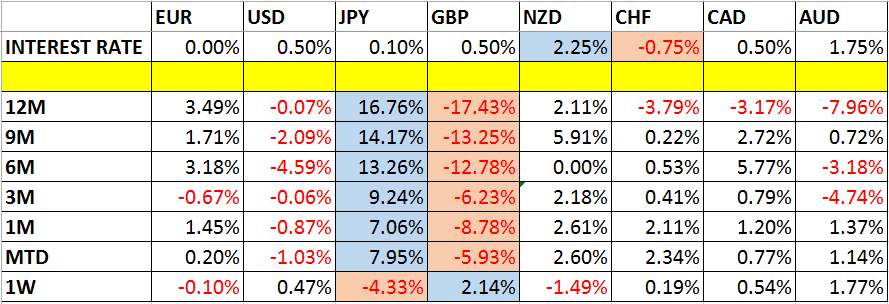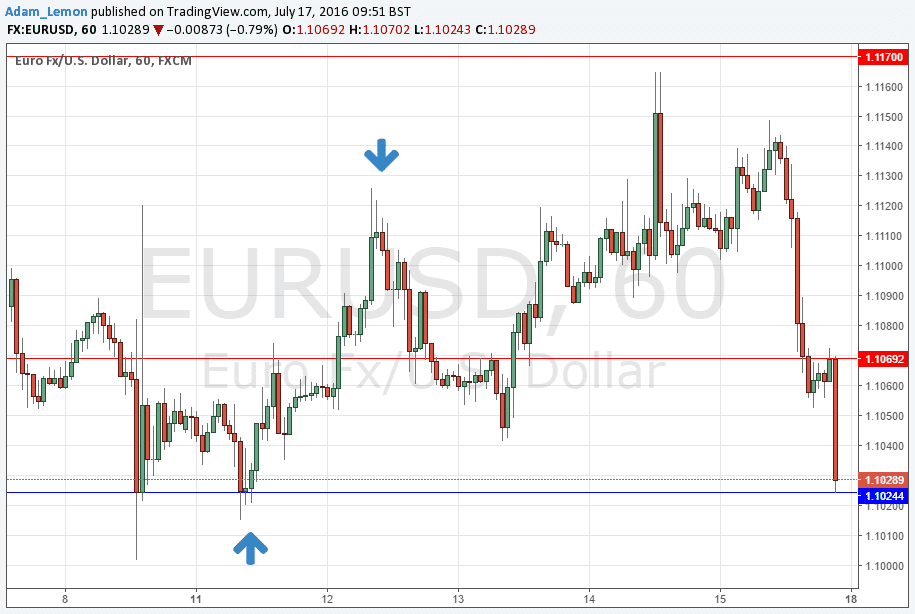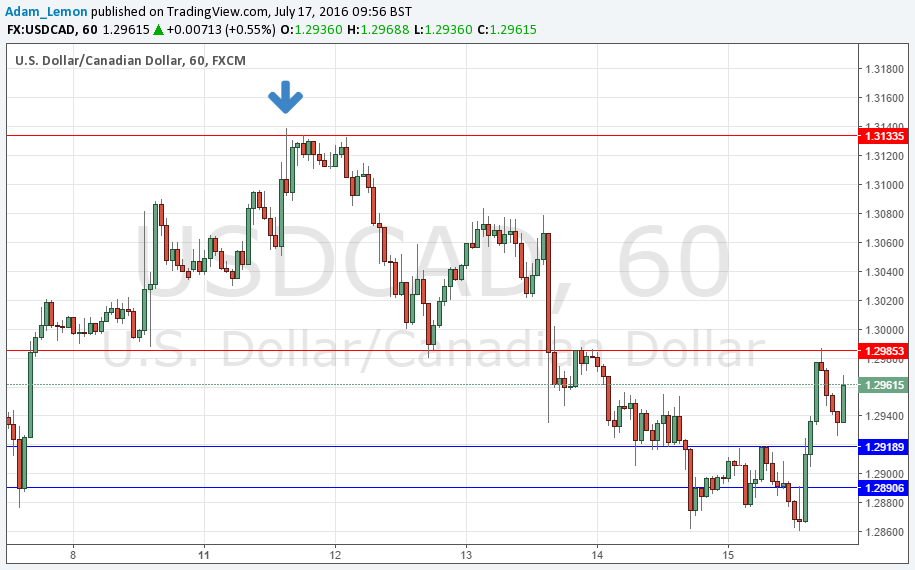This week we’ll begin with our monthly and weekly forecasts of the currency pairs worth watching. The first part of our forecast is based upon our research of the past 11 years of Forex prices, which show that the following methodologies have all produced profitable results:
Trading the two currencies that are trending the most strongly over the past 3 months.
Assuming that trends are usually ready to reverse after 12 months.
Trading against very strong counter-trend movements by currency pairs made during the previous week.
Buying currencies with high interest rates and selling currencies with low interest rates.
Let’s take a look at the relevant data of currency price changes and interest rates to date, which we compiled using a trade-weighted index of the major global currencies:
Monthly Forecast July 2016
This month we forecasted that the best movements will be short GBP/USD and USD/JPY. The performance so far is as follows:
Weekly Forecast 17th July 2016
Last week, we made no forecast.
This week, we forecast that the USD/JPY pair will fall in value.
This week has been dominated by strength in the British Pound and Australian Dollar, and weakness in the Japanese Yen and New Zealand Dollar. Last Friday’s strong U.S. data have boosted stock markets and may spark a renewed rally of risk assets, although the British Pound at least is likely to remain relatively weak.
Volatility was greater than it was last week, with approximately 67% of the major and minor currency pairs changing in value by more than 1%. Volatility is likely to be fairly similar over this coming week, which will be dominated by European and Australian central bank actions.
You can trade our forecasts in a real or demo Forex brokerage account.
Key Support/Resistance Levels for Popular Pairs
At the FX Academy, we teach that trades should be entered and exited at or very close to key support and resistance levels. There are certain key support and resistance levels that should be watched on the more popular currency pairs this week, which might result in either reversals or breakouts:
Let’s see how trading two of these key pairs last week off key support and resistance levels could have worked out:
EUR/USD
We had expected the level at 1.1025 might act as support, and the level at 1.1120 as resistance, as both of them had acted previously as both support and resistance. Note how these “flipping” levels can work really well. The H1 chart below shows the price made double inside candles when each of these levels was first reached, as marked by the arrows. The long trade off 1.1025 was superior, giving a maximum reward to risk ratio of approximately 4 to 1 if the stop had been placed just below the swing low.
USD/CAD
We had expected the level at 1.3134 might act as resistance, as it of them had acted previously as both support and resistance. Note how these “flipping” levels can work really well. The H1 chart below shows the price made a bearish pin candle when the level was first reached, as marked by the down arrow. This occurred during the New York session, which is typically a good time to trade this pair. Although the price took several candles to turn around and threatened to make a new high, the resistance held nicely, giving an excellent maximum reward to risk ratio greater than 5 to 1 if the stop had been placed just above the swing high.
You can trade our forecasts in a real or demo Forex brokerage account to test the strategies and strengthen your self-confidence before investing real funds.





